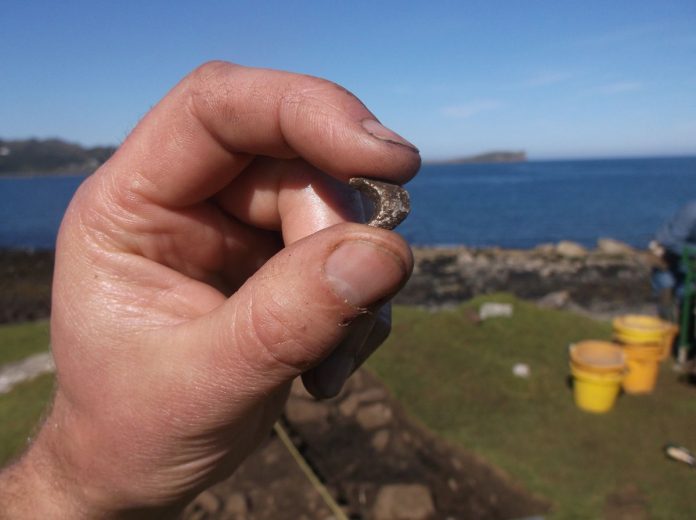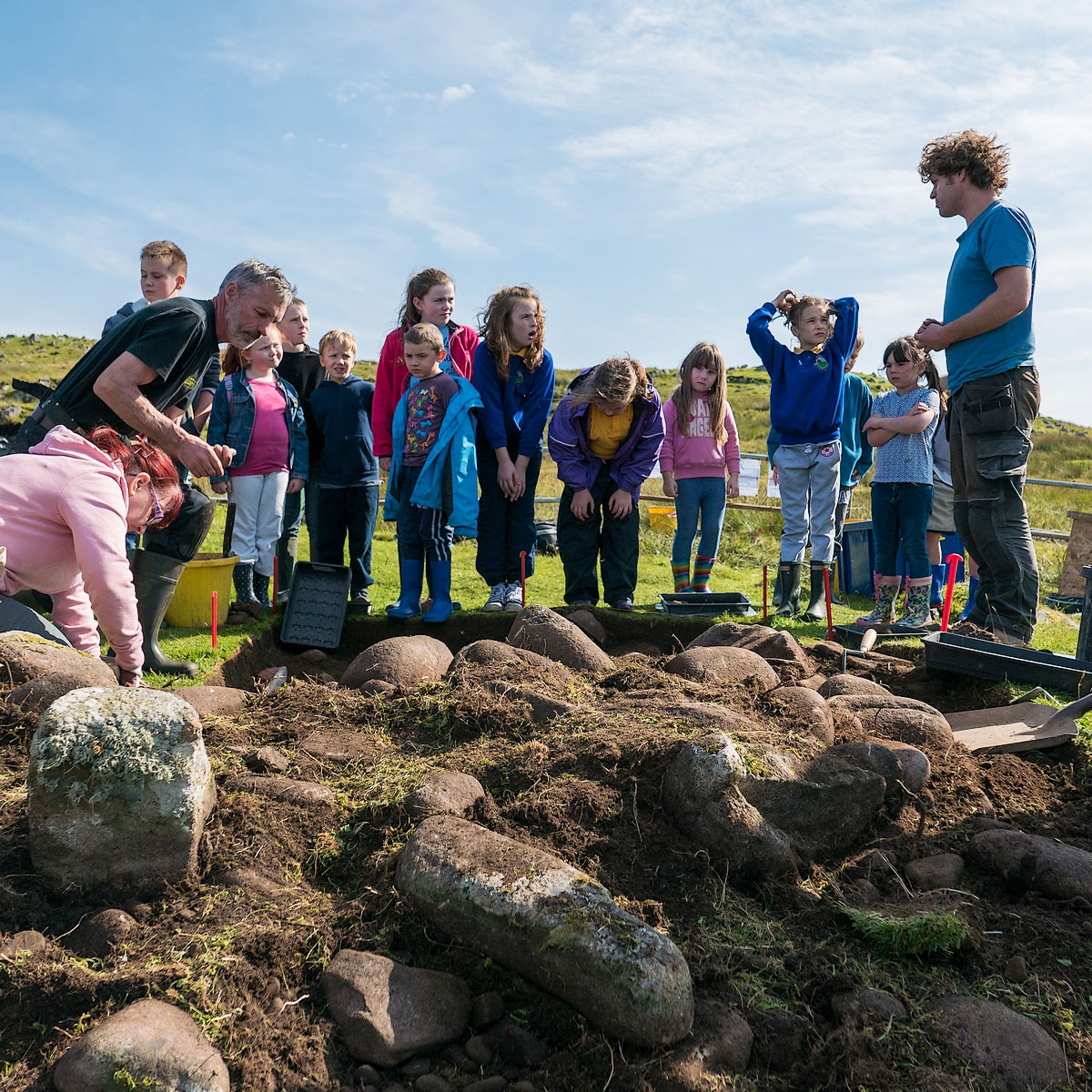The discoveries were made during the dig in Staffin earlier this month as University of the Highlands and Islands archaeologists investigated a suspected Mesolithic building by Staffin Bay. While the structure is expected to be confirmed as post-medieval the discovery of other material, including the possible bead which was recovered from material below it, could provide further clues about life in the area 8,000 years ago.
The worked bone is 12-mm long, burnt, and appears to have been deliberately shaped at one end and possibly drilled at the other, although this could be a fracture break during burning. It could have been a toggle or bead, perhaps worn on an item of clothing or part of a necklace if the drilling is authentic, or part of a burnt bevel-ended tool. Further analysis is required by UHI.
The community-centred excavation captured local imagination and more than 200 people visited the five-day dig called Fo fòid na time (Under the layers of time) which was a collaborative project between the Archaeology Institute UHI and the Staffin Community Trust (SCT). There were 10 local volunteers and pupils from Staffin and Kilmuir primary school were involved in the dig and used a range of techniques to investigate the site.
Dan Lee, UHI lifelong learning and outreach archaeologist, said the site may have been one of several along Staffin Bay where hunter-gatherers congregated and worked stone, perhaps exploiting resources such as fish and mammals at the mouth of the Kilmartin River.
Mr Lee said further excavations, which could investigate if hearths or structural evidence survived, would help define this period of activity at the site. “Although the structure did not turn out to be prehistoric, it has protected significant evidence for Mesolithic activity below it,” said Mr Lee. “Hopefully we have enough material for radiocarbon dates and further excavation would be useful to better define the extent of the site. The UHI Archaeology Institute looks forward to working with Staffin Community Trust on future phases of the project”.
SCT director Dugald Ross, who had monitored the site for several years, said: “The excavation has given us the opportunity of adding to our knowledge of early habitation of Staffin and although the circular foundation now appears to be a later date than initially thought the lower levels have yielded material which is typical of the first groups of people to have arrived in Scotland after the last Ice Age.”
SCT would like to thank the Garafad township and Kilmuir Estate for permission to carry out the excavation. The project was funded by the Scottish Funding Council via Interface Scotland, Highland Council and the Carnegie Foundation of New York.
Archaeological geophysics – resistance survey and ground penetrating radar – defined the structure wall and internal area, and also picked up nearby lazy beds. Topographic survey was used to create a contour plan. Test pits were dug to the south of the site and contained numerous flints in the topsoil showing that Mesolithic activity may have occurred over a wide area. Activity focused on a slight promontory as several hundred flints, including flakes and tools such as scrapers and blades, and the cores used to knap them, were found in an old topsoil horizon below the structure. The majority of the assemblage is made up of waste flakes or debitage.


